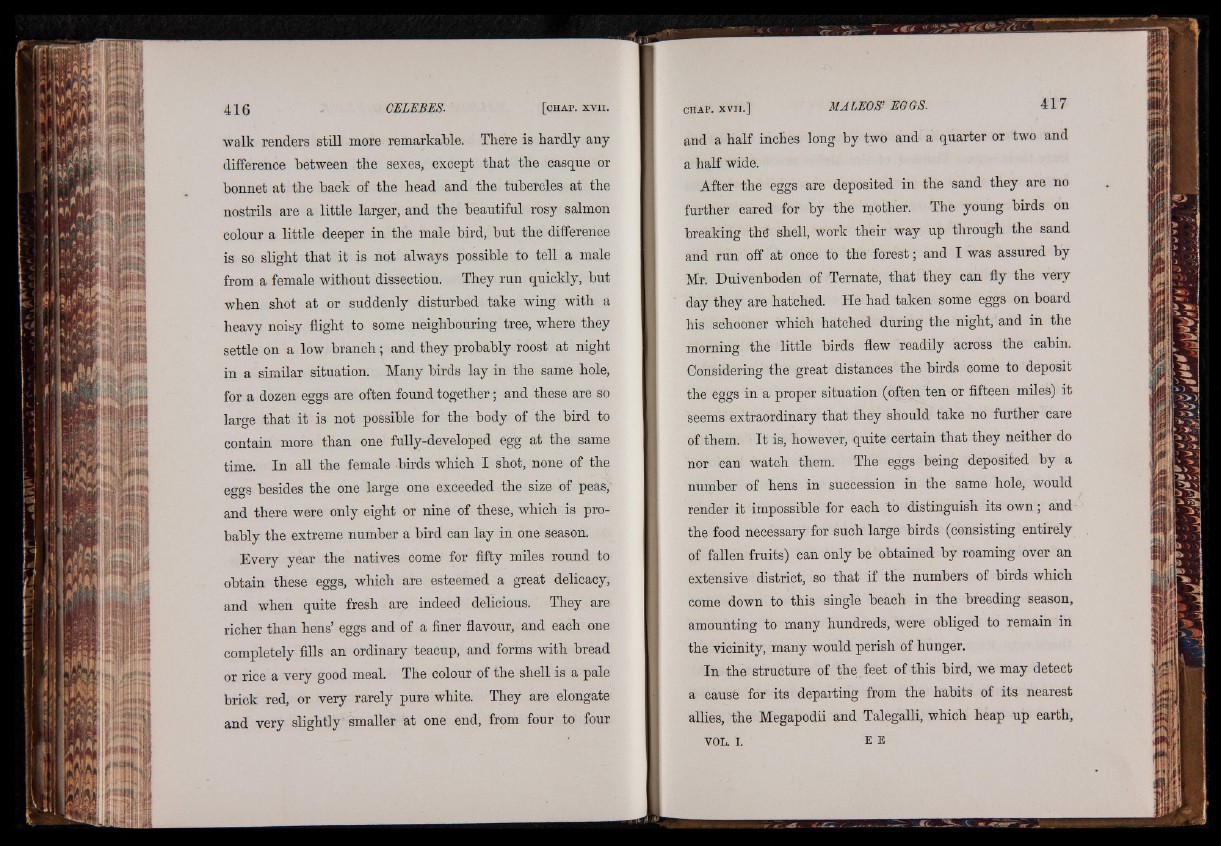
walk renders still more remarkable. There is hardly any
difference between the sexes, except that the casque or
bonnet at the back of the head and the tubercles at the
nostrils are a little larger, and the beautiful rosy salmon
colour a little deeper in the male bird, but the difference
is so slight that it is not always possible to tell a male
from a female without dissection. They run quickly, but
when shot at or suddenly disturbed take wing with a
heavy noisy flight to some neighbouring tree, where they
settle on a low branch ; and they probably roost at night
in a similar situation. Many birds lay in the same hole,
for a dozen eggs are often found together; and these are so
large that it is not possible for the body of the bird to
contain more than one fully-developed egg at the same
time. In all the female birds which I shot, none of the
eo-gs besides the one large one exceeded the size of peas;
and there were only eight or nine of these, which is probably
the extreme number a bird can lay in one season.
Every year the natives come for fifty miles round to
obtain these eggs, which are esteemed a great delicacy,
and when quite fresh are indeed delicious. They are
richer than hens’ eggs and of a finer flavour, and each one
completely fills an ordinary teacup, and forms with bread
or rice a very good meal. The colour of the shell is a pale
brick red, or very rarely pure white. They are elongate
and very s l i g h t l y smaller at one end, from four to four
and a half inches long by two and a quarter or two and
a half wide.
After the eggs are deposited in the sand they are no
further cared for by the mother. The young birds on
breaking the shell, work their way. up through the sand
and run off at once to the forest; and I was assured by
Mr. Duivenboden of Ternate, that they can fly the very
day they are hatched. He had taken some eggs on board
his schooner which hatched during the night, and in the
morning the little birds flew readily across the cabin.
Considering the great distances the birds come to deposit
the eggs in a proper situation (often ten or fifteen miles) it
seems extraordinary that they should take no further care
of them. I t is, however, quite certain that they neither do
nor can watch them. The eggs being deposited by a
number of hens in succession in the same hole, would
render it impossible for each to distinguish its own; and
the food necessary for such large birds (consisting entirely
of fallen fruits) can only be obtained by roaming over an
extensive district, so that if the numbers of birds which
come down to this single beach in the breeding season,
amounting to many hundreds, were obliged to remain in
the vicinity, many would perish of hunger.
In the structure of the feet of this bird, we may detect
a cause for its departing from the habits of its nearest
allies, the Megapodii and Talegalli, which heap up earth,
vol. I. E E